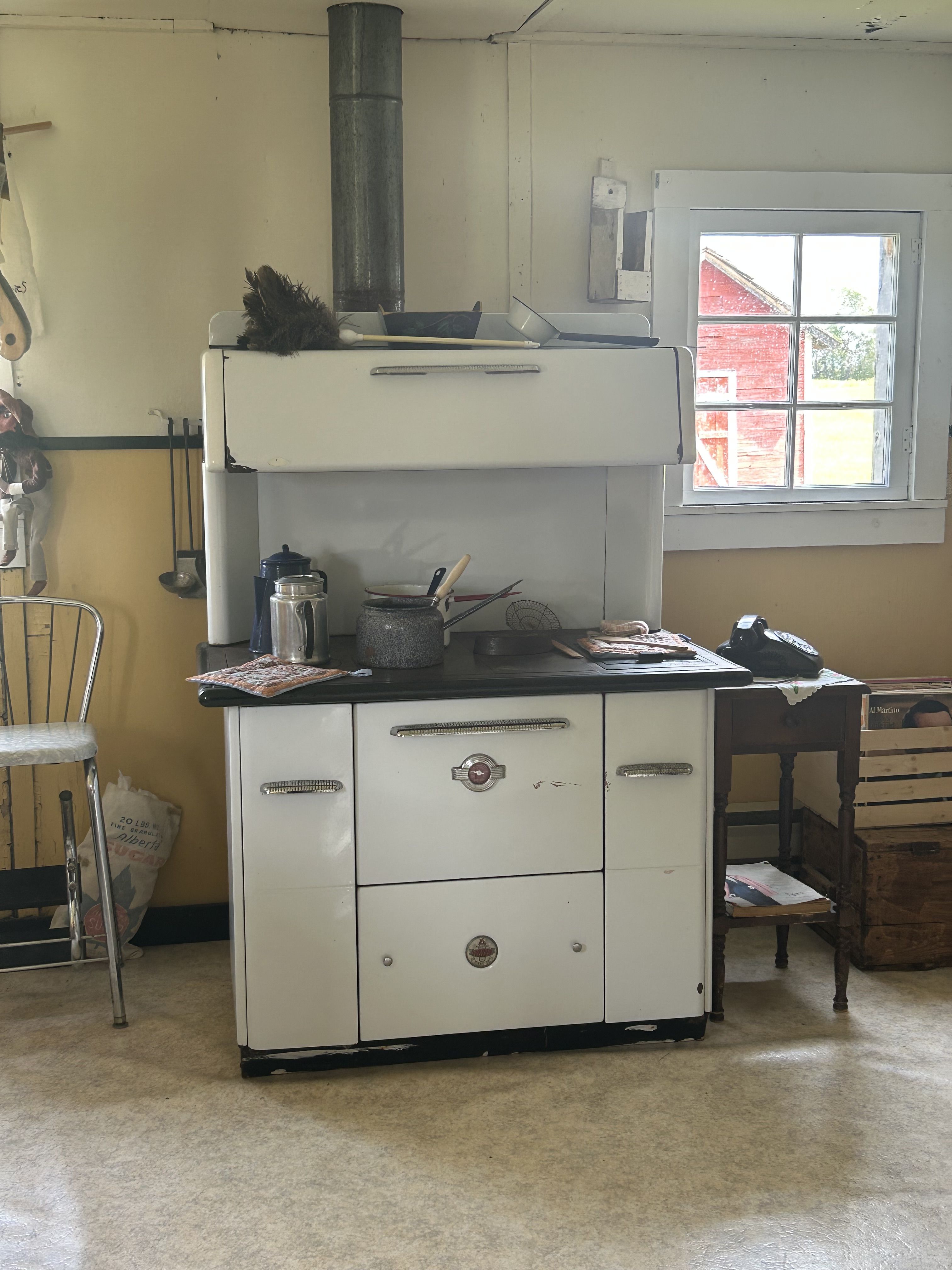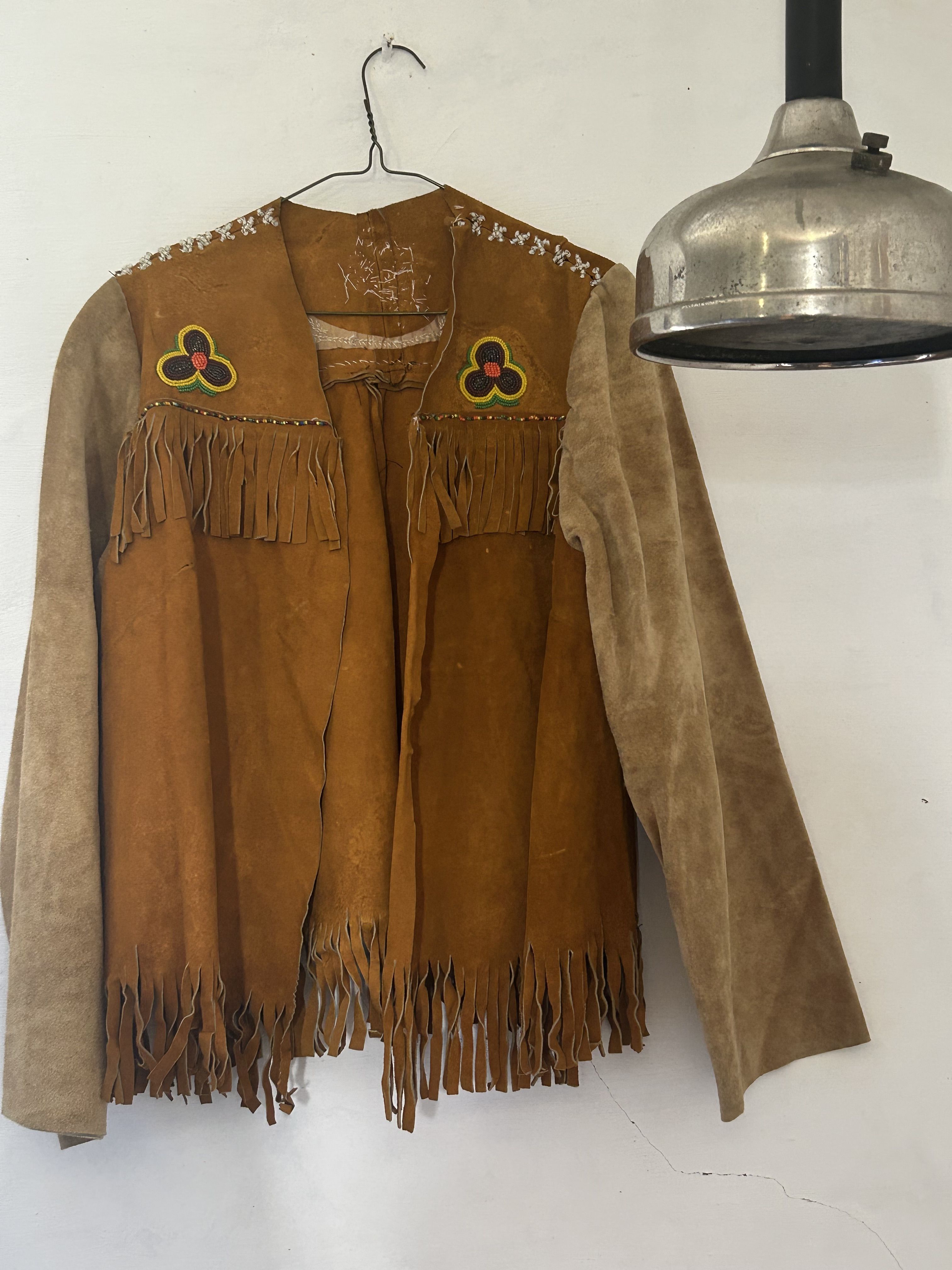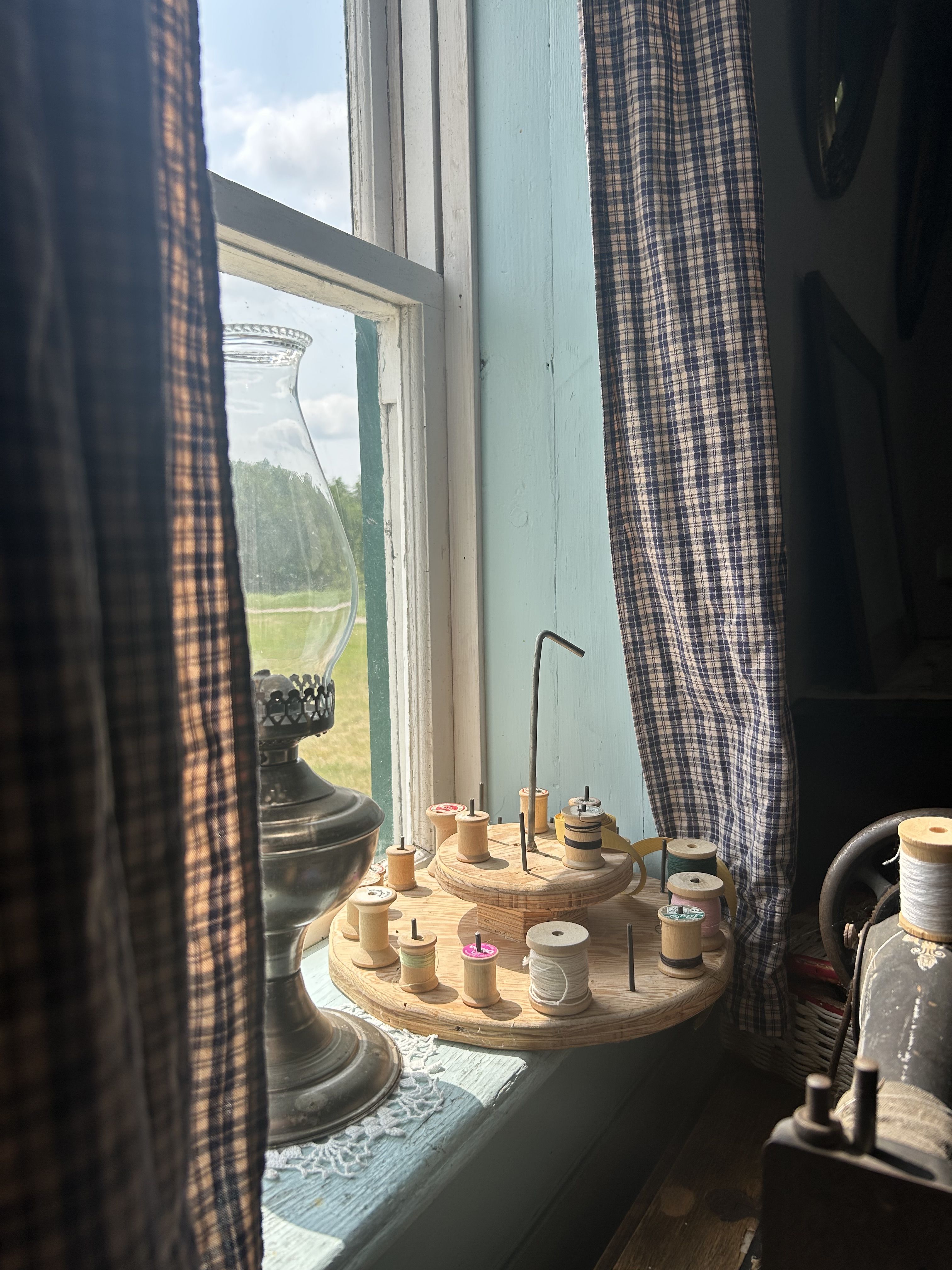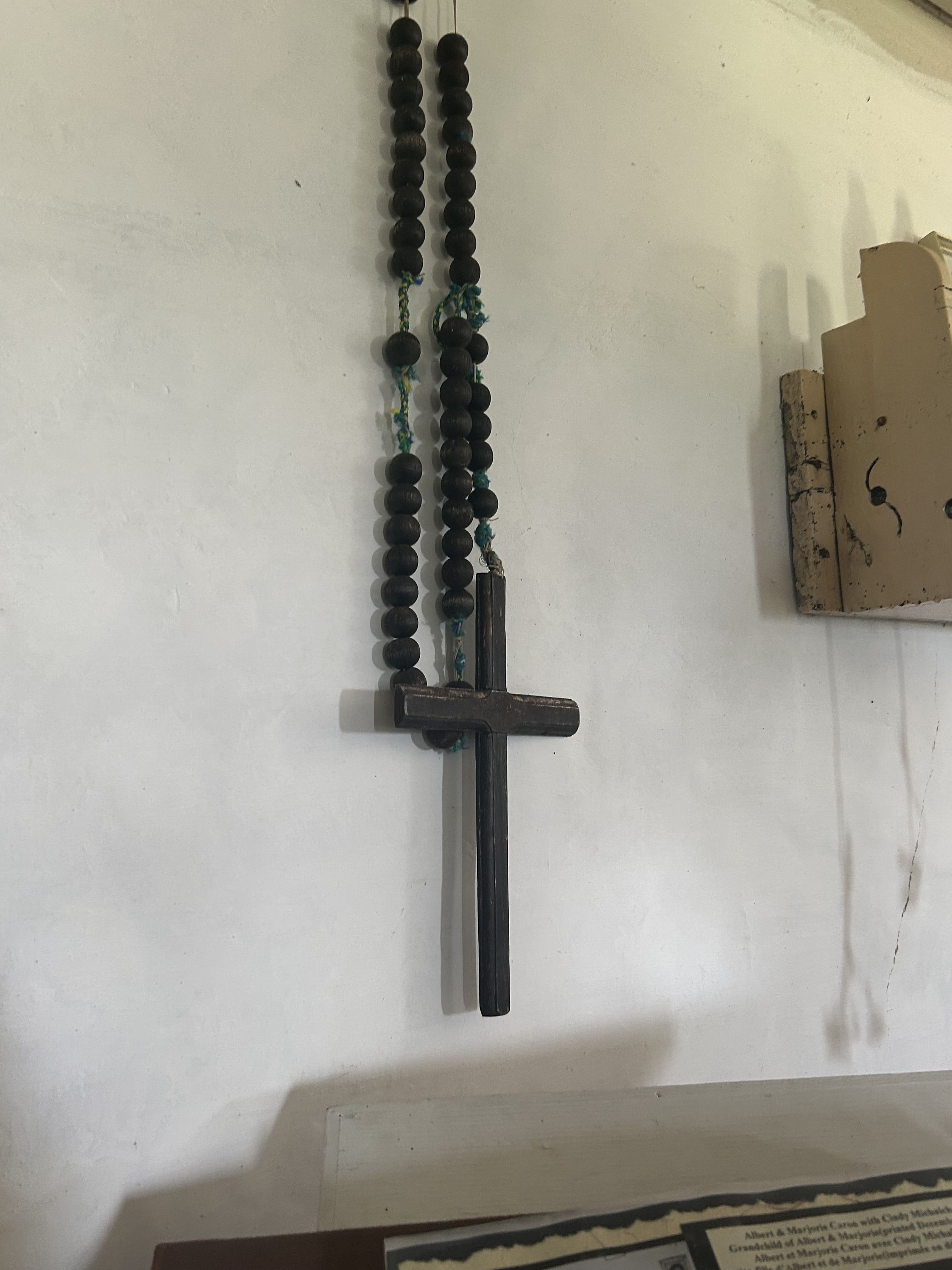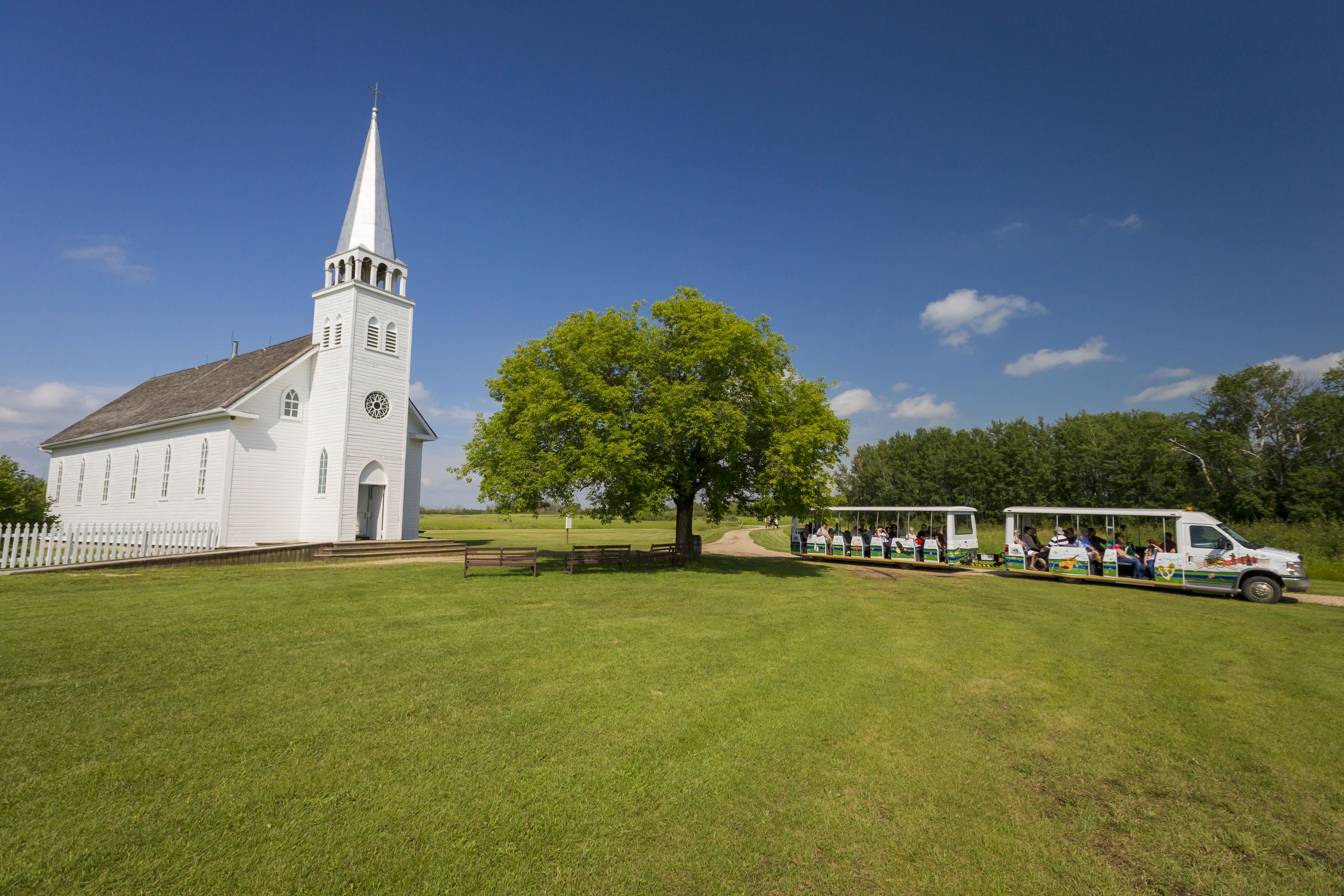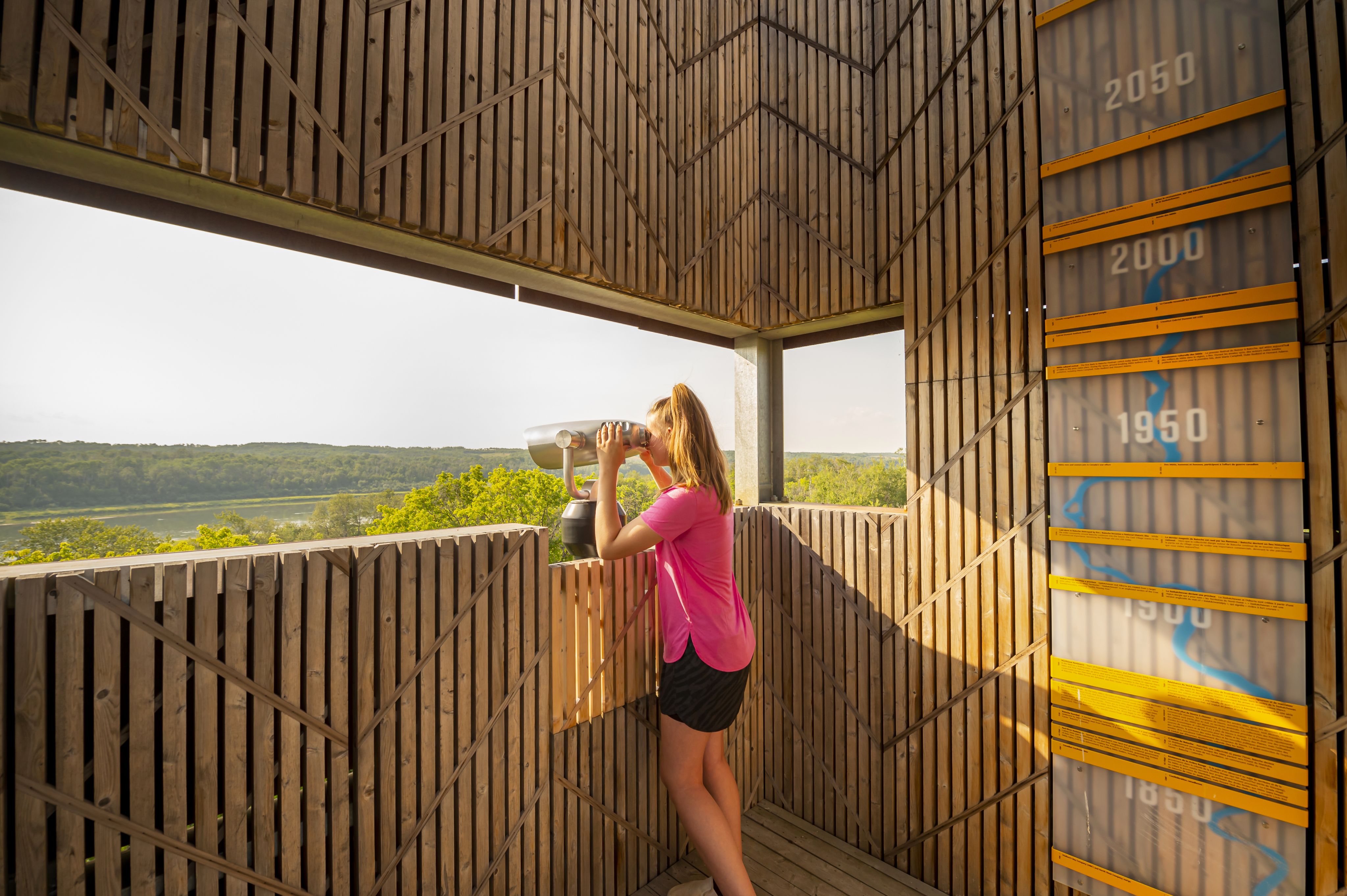Still They Dance: The Spirit of Batoche
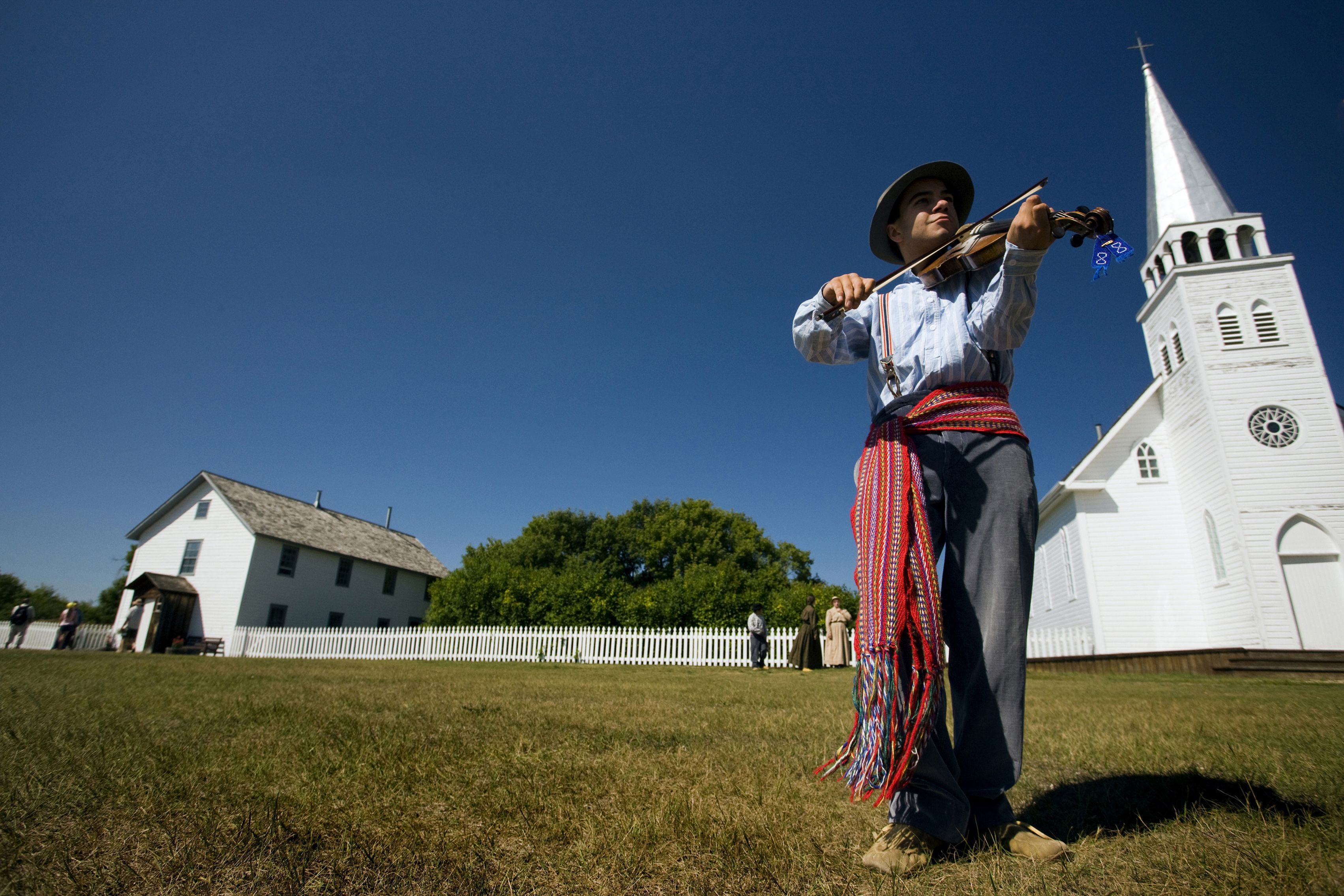
On the wide-open prairies of central Saskatchewan, the Batoche National Historic Site offers a powerful window into Métis history and resilience.
This is where stories of the past shape a vibrant cultural present.
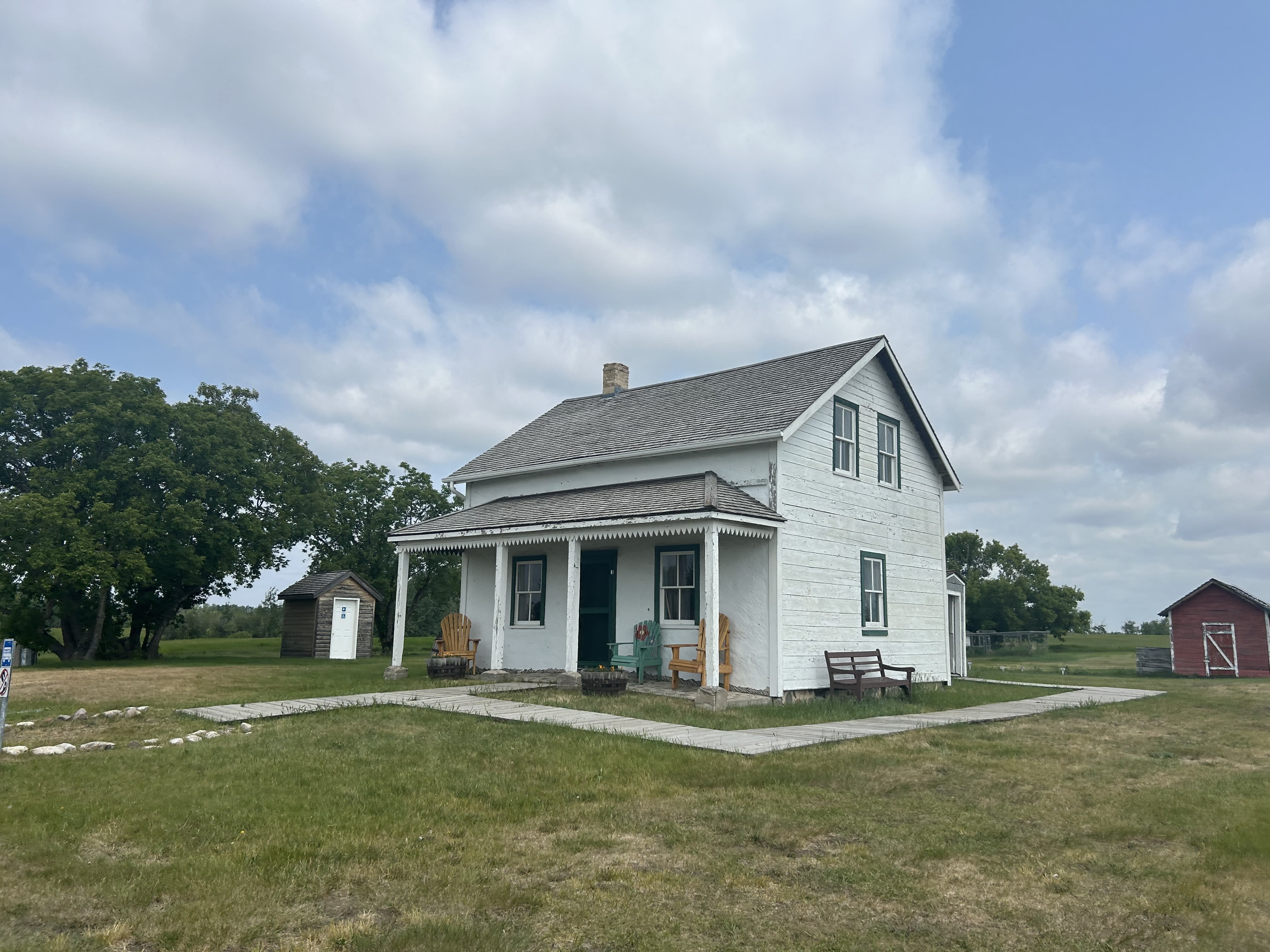
The floorboards creak underfoot inside the Former Jean Caron Sr. House on the grounds of Batoche National Historic Site, their soft groan a reminder that this place has stood witness to generations. Sunlight filters through the thin plaid curtains, catching the worn wood of the window sill through which members of the Caron family once gazed — Métis farmers whose lives, like so many here, were shaped by both the land and the long shadow of conflict.
"The Caron family lived here until 1971," says Adam Matheson, Interpretive Coordinator at Batoche. "They were a very popular family; everyone loved them."
Adam points to the creaky floorboards. "They would have jigging parties here. Other families would come over, and they would play the fiddle well into the night."
This is Batoche not as monument, but as memory — intimate, textured, alive. Visitors who step into this restored homestead expecting a history lesson often find something deeper: a connection to a culture whose story still pulses through the Canadian Prairies.
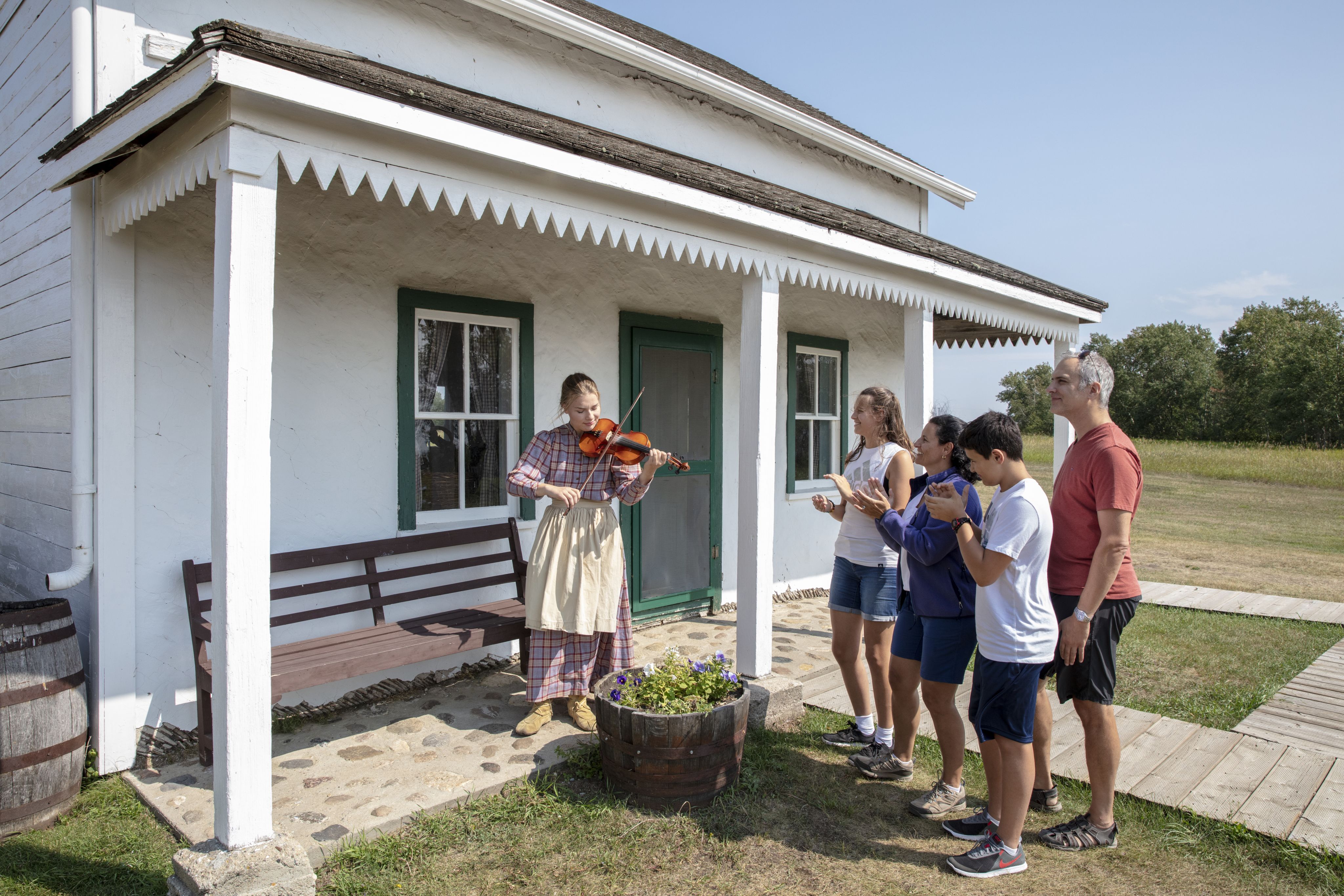
Batoche National Historic Site sits on the banks of the South Saskatchewan River, about an hour north of Saskatoon. For such a quiet and unassuming place, it holds a loud chapter in Canada’s history. Once a thriving Métis settlement, it became the centre of the 1885 Northwest Resistance — a pivotal moment when Métis people took a stand against the Canadian government. Their fight was about land, rights, and recognition. Batoche was where the final battle, and leader Louis Riel's last stand, unfolded.
Adam recounts the tale of how Canadian soldiers fired warning shots to get families to flee their homes and then set the homes on fire to ensure they wouldn't come back. But many did. Even after the battle was lost, Batoche remained a Métis settlement and some families, like the Carons, rebuilt their homes in their lots along the river.
In 1923, the area was designated a national historic site, commemorated not only because of what happened here during that conflict, but because it continues to represent a place where Métis culture, language, and identity are remembered, celebrated, and carried forward.
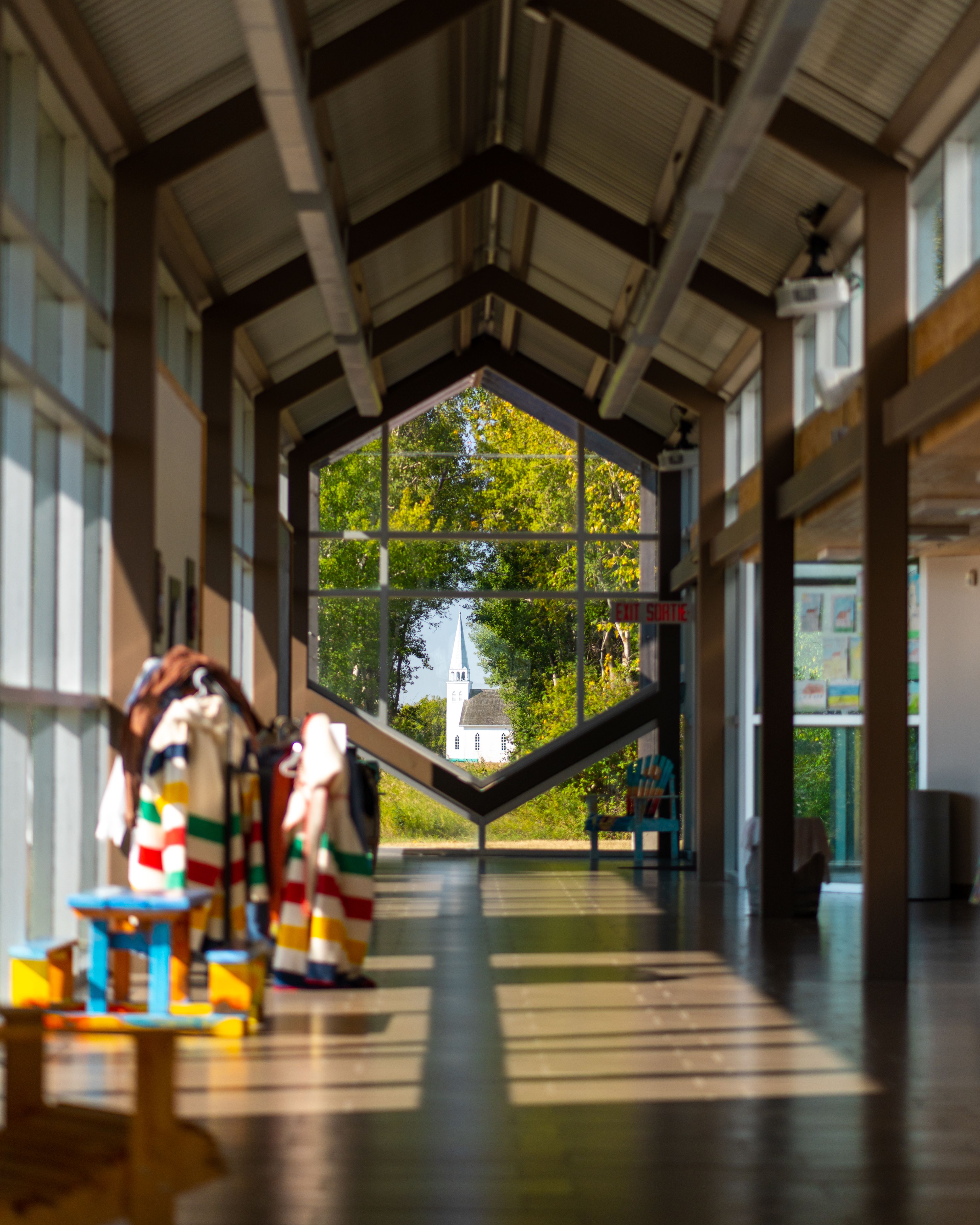
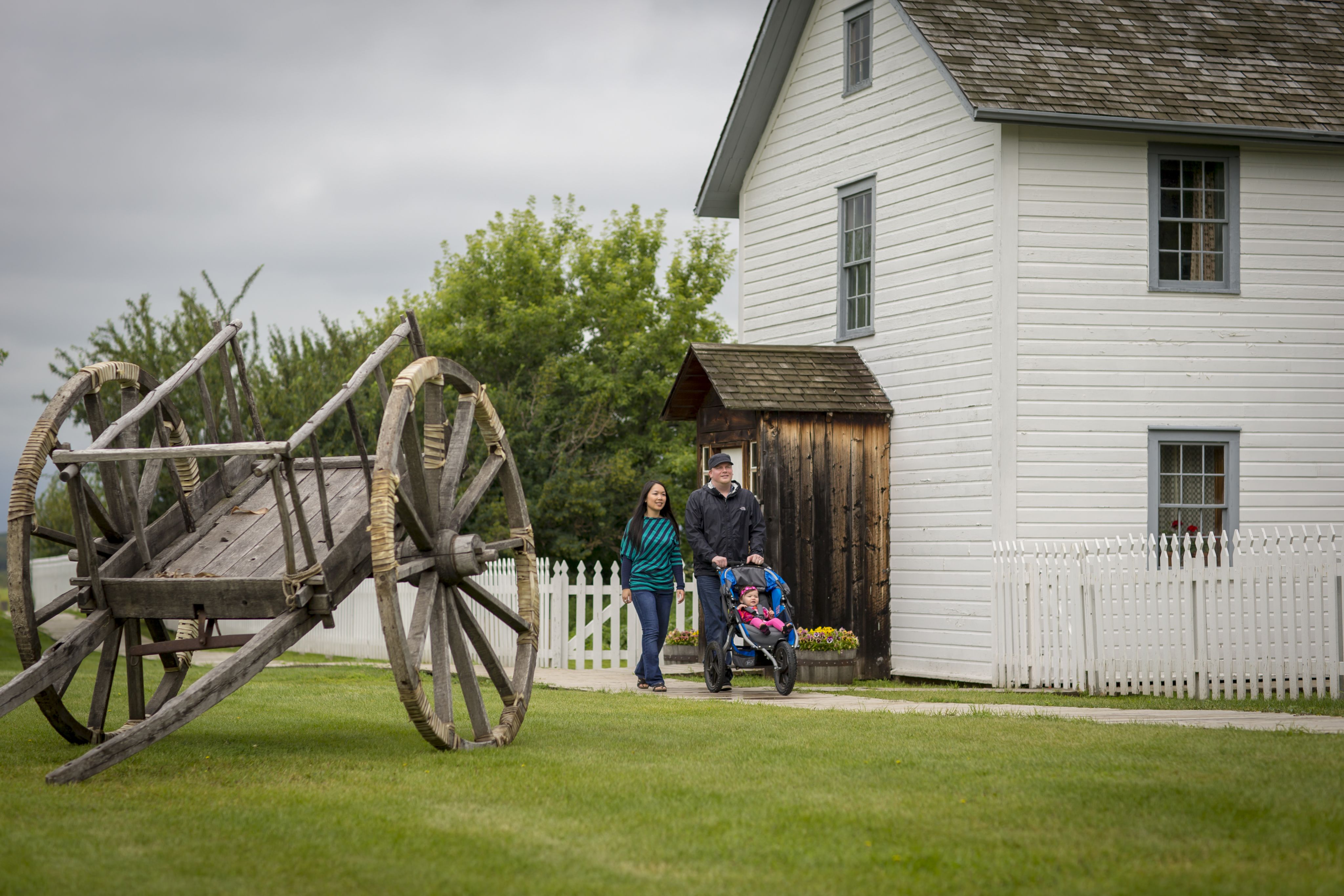
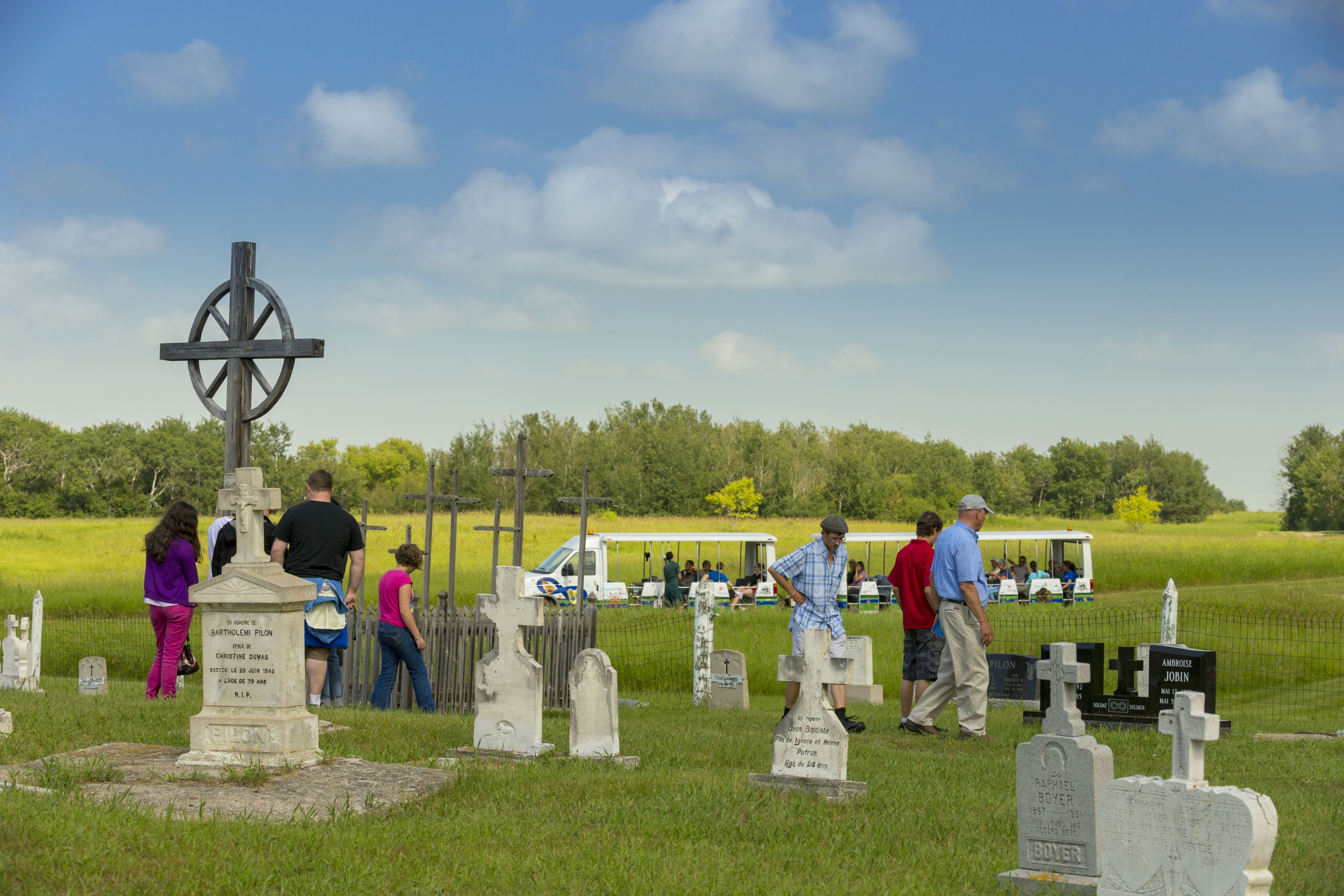
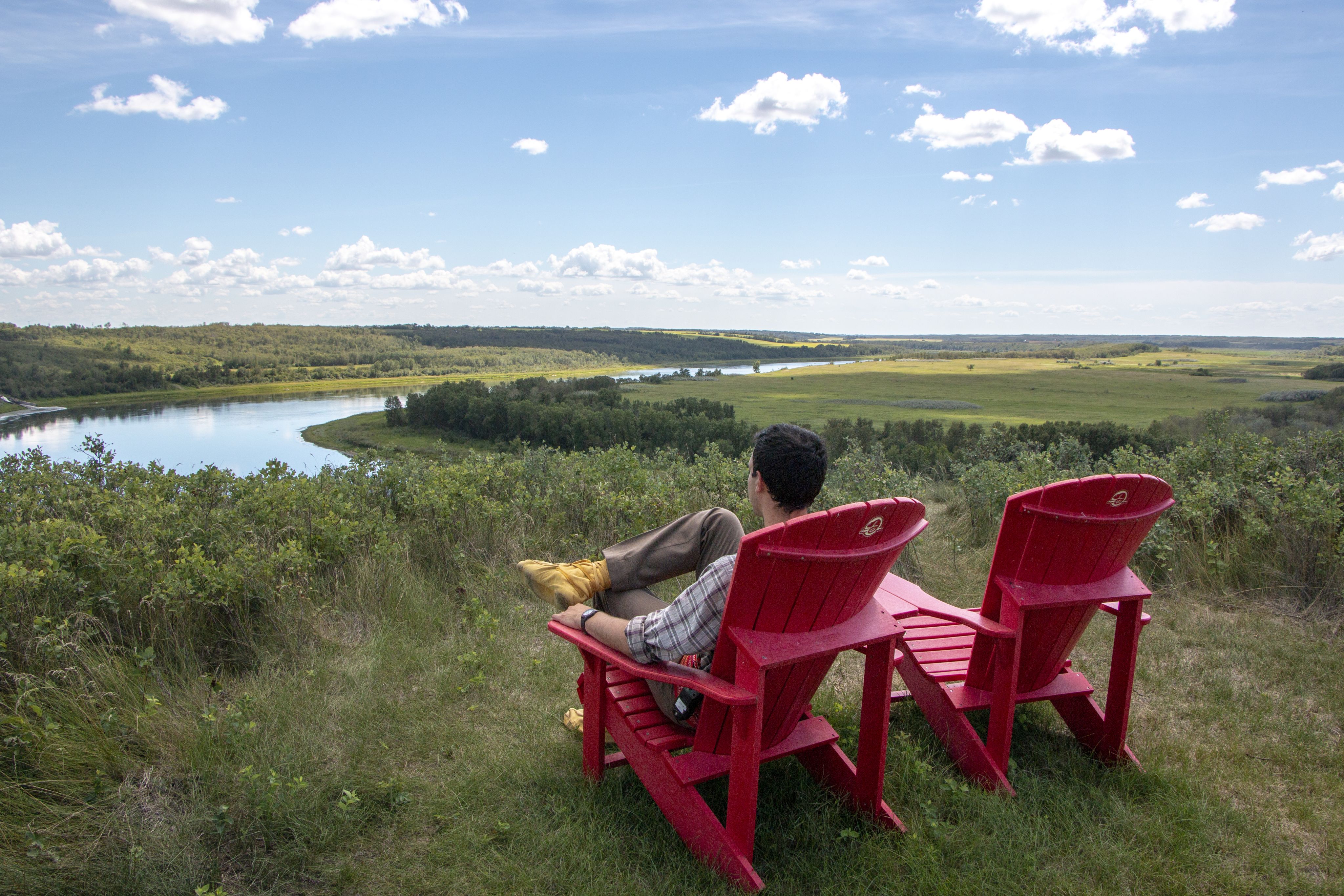
Today, visitors to Batoche National Historic Site can walk through key buildings that bring the past to life, including the Former Jean Caron Sr. House and the restored Rectory, where you’ll find exhibits, artifacts, and photographs that trace the daily lives of Batoche’s Métis residents.
The site’s focal point is the Saint-Antoine-de-Padoue Church and Cemetery, where bullet holes from the 1885 battle are still visible in the church walls. The adjacent cemetery is the final resting place of many who lived through the Resistance, including fallen Métis fighters.
Photo: Tourism Saskatchewan/Greg Huszar Photography
Photo: Tourism Saskatchewan/Greg Huszar Photography
Walking trails trace the ridgelines and riverbanks where the battle unfolded, offering views of the South Saskatchewan River and interpretive panels that add historical context to the landscape. In summer, interpretive programming and storytelling sessions offer deeper insight into cultural traditions, including fiddle music, jigging, and the Michif language.
Photo: Parks Canada / Chris Hendrickson
Photo: Parks Canada / Chris Hendrickson
For those looking to experience Batoche at its most vibrant, the annual Back to Batoche Days celebration draws Métis families and visitors from across Canada each July. It’s a gathering filled with music, food, games, and community — proof that Batoche is not just a place of remembrance, but of living culture.
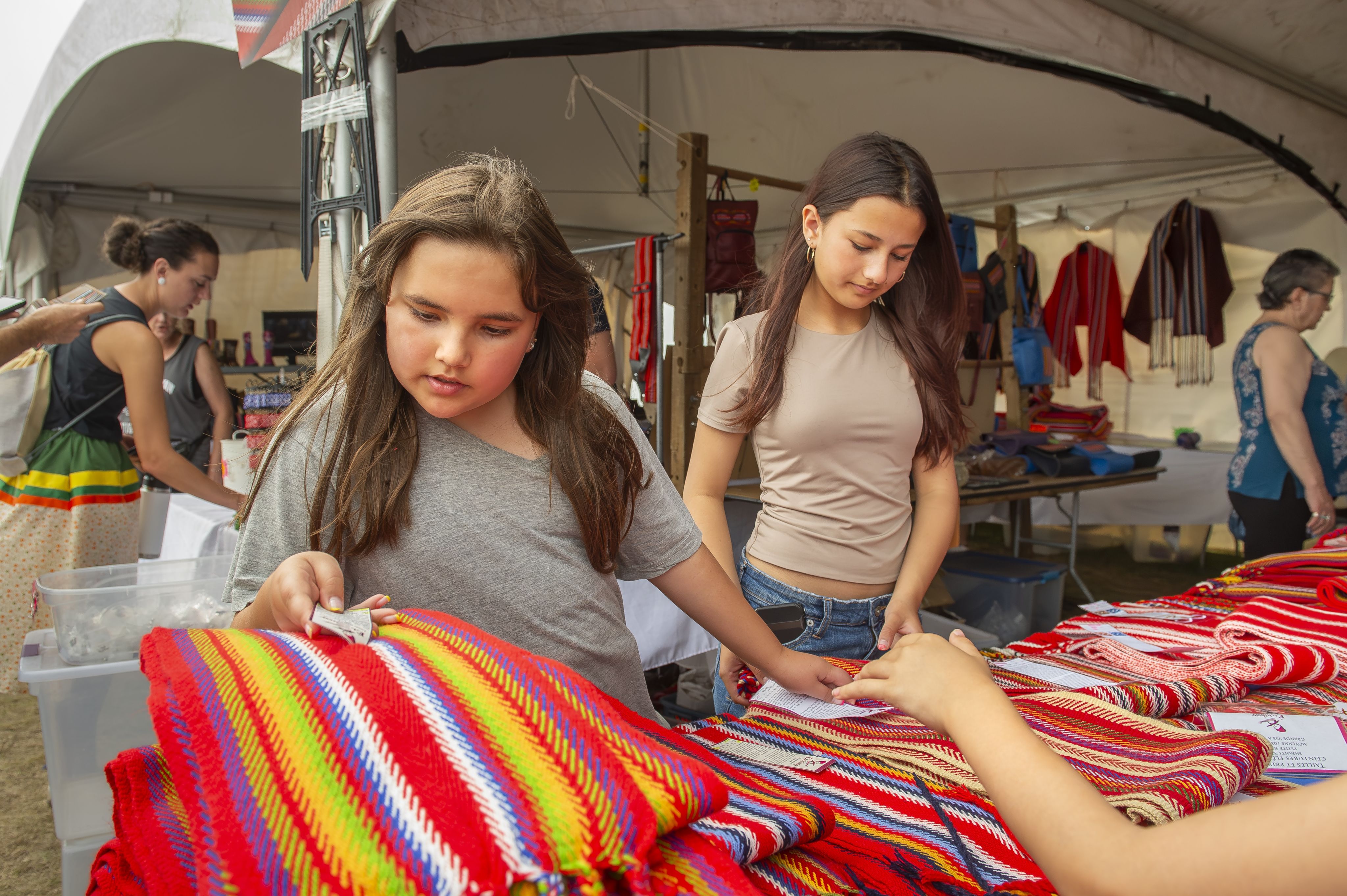

Canada. Crafted by Canadians.


